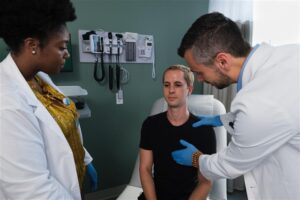What’s TB and it’s Symptoms

TB affects all persons irrespective of age, race or religion.
Tuberculosis is an epidemic disease that leads to deaths.
Tuberculosis (TB) is an infectious disease that most often affects the lungs and is caused by bacteria.
It spreads through the air when infected people cough, sneeze or spit.
According to WHO TB is the 13th killer disease and second infectious disease after COVID 19
About a quarter of the global population is estimated to have been infected with TB bacteria. About 5–10% of people infected with TB will eventually get symptoms and develop TB disease.
Those who are infected but not (yet) ill with the disease cannot transmit it. TB disease is usually treated with antibiotics and can be fatal without treatment.
In certain countries, the Bacille Calmette-Guérin (BCG) vaccine is given to babies or small children to prevent TB. The vaccine prevents TB outside of the lungs but not in the lungs.
Anyone can contact TB disease and that Only a small proportion of people who get infected with TB will get TB disease and symptoms.
Babies and children are at higher risk of contracting the disease.
People with other health problems such as;diabetes (high blood sugar)
weakened immune system (for example, HIV or AIDS) being malnourished tobacco use are at risk of contracting TB.
Unlike TB infection, when a person gets TB disease, they will have symptoms. These may be mild for many months, so it is easy to spread TB to others without knowing it.
Common symptoms of TB are prolonged cough (sometimes with blood), chest pain, weakness, fatigue,
weight loss, fever, night sweats among others.
TB is known to affect the lungs but can also affect other parts of the body such as kidneys, brain ,skin and spine.





